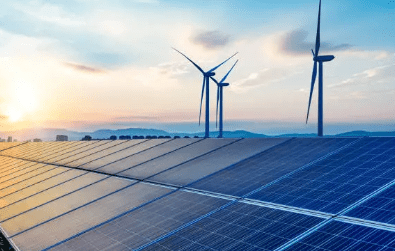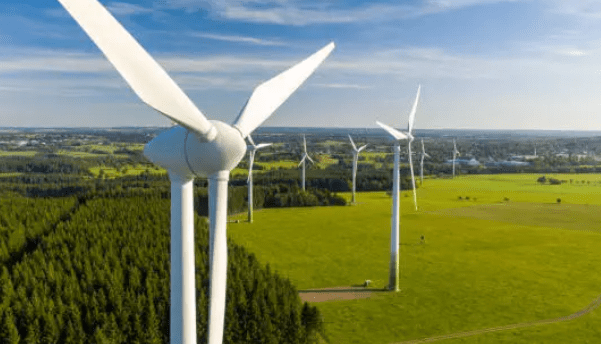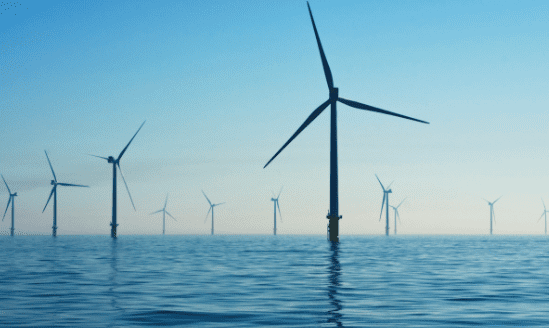Britain is pioneering the first floating wind farms with Kincardine, which is becoming the biggest floating wind farm in the world. These floating turbines are able to install at much deeper waters where the winds are much stronger compared to the traditional fixed turbines on the sea bed. This may turn into a breakthrough likely to revolutionize offshore wind energy if present challenges are overcome.

Travel 10 miles off the coast of Aberdeen, Scotland, and here’s what you’ll find: five giant wind turbines, their spin high above the North Sea. Those turbines of the Kincardine wind farm are a different beast. They are floating, not moored to the seabed, and an enormous step up in clean energy!
What makes the Kincardine wind farm special is that it is the world’s biggest floating wind farm. Each of its turbines stands on a buoyant platform that floats in the sea. Traditional wind turbines are fixed to the seabed; floating ones are held in place by cables attached to the ocean floor. This allows them to be put in much deeper waters where the winds blow stronger.
Imagine those turbines as big windmills, 30 meters in height over the surface of the sea, and all of that is sustained by three big columns floating on a triangular base. Some designs use large weights, such as water or rocks, to hold the turbines in position. The technology of floating is not new itself, though; it was initially applied to oil rigs starting in the 1960s and is now being used for wind power.
The best wind resources globally are located in the deep waters, beyond the reach of fixed turbines. Thus, although there are numerous offshore wind farms in the UK, the new floating turbines could probe depths that have been beyond reach until now. This allows more places to use wind power and really helps to get even cleaner energy.

The Kincardine wind farm produces 50 megawatts of electricity. Impressive, but tiny compared to the Hornsea 2 wind farm, which produces 1.32 gigawatts and powers more than 1.4 million homes. In total, the UK’s floating wind farms produce just 80 megawatts of power: a small fraction when set against the 14 gigawatts of power produced by fixed offshore wind farms of the UK.
But all of this is about to change. Britain has set ambitious targets for the production of wind energy, with an expected 5 gigawatts from floating farms by 2030, and fixed wind farms growing to 60 gigawatts. Floating wind farms may make real contributions to the UK’s energy strategy in the near future.
If energy costs are to be brought down, and renewable energy hiked, more offshore wind power is a must. With the rising energy bills and the largest increase ever seen since the Ukraine conflict, the UK is pressing on with developing more wind energy to keep the costs down.
The Crown Estate recently invited bids for the construction of three Celtic Sea-based floating wind farms off Britain. This is expected to speed up the development of floating offshore wind farms. The trade association Renewable UK estimates that by the 2040s, more than half of offshore wind energy in the UK could come from floating wind farms.
According to Renewable UK’s Jane Cooper, the future of floating wind energy projects is on track. “Floating offshore wind is the next big thing for offshore wind,” says Ms. Cooper. “It’s just the natural next step. It allows us to build projects further out at sea in deeper waters with higher wind speeds.
While all this sounds exciting, challenges lie ahead. Probably the greatest challenge lies in the cost: floating wind farms are currently at least twice as expensive as fixed ones. The UK government will try to offset this with its new clean energy subsidies. However, prices are still extremely high, and it will take powerful support to enable developers to make floating wind farms more affordable to people.
Other issues are that the size of the ports in the UK is meager to harbor the giant turbines and the floating platforms for the farms. They need investments in the infrastructure of the ports to upgrade them so they can support the new technology. This might lead the UK to miss out on important opportunities without this much-needed investment.
The Britain-first floating wind farm was sent to Norway for maintenance because none of UK ports could handle it. Hense, there is an issue concerning infrastructure. “We need to attract £4bn of investment in new port facilities for floating wind by the end of this decade,” Cooper said. This investment could create 45,000 jobs and boost the economy.

This means that floating wind also has international potential. The technology would work in countries that are less favorable for fixed turbines around the coastlines, like Portugal, Japan, and the US.
One of them—Rovco—is UK-based, independent, and specializes in subsea surveying and robotics. It is one of the fastest-growing start-ups in the offshore wind sector. Rovco is set to hit a billion dollars in valuation as it grows into global prospects. Brian Allen, CEO of Rovco, sees a bright future for the industry. “The progress we’ve made in the last 10 years is just the beginning,” he says. “Floating wind farms will become a massive industry soon.”.
The floating wind industry is developing at the speed of light. This is changing the wind game towards clean, and good times are ahead for that exciting technology.











